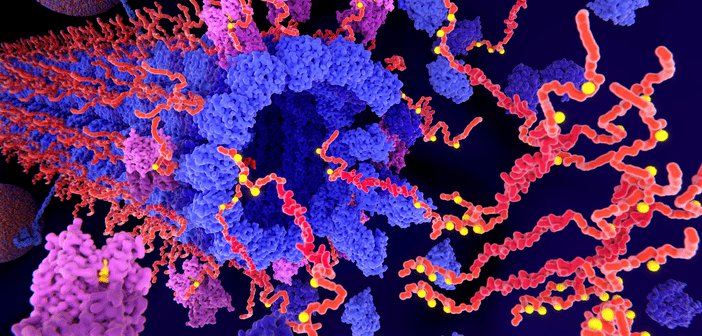Brand new biomarker found to aid in early Alzheimer’s diagnosis

Researchers have discovered a biomarker that could assist physicians to diagnose Alzheimer’s disease earlier, whilst the patient is transitioning into mild cognitive impairment (MCI).
Alzheimer’s disease was once only possible to definitively diagnose posthumously, however latest biomarker studies have led to imaging and spinal fluid tests being developed for those still alive with the disease. On the other hand, these tests can only monitor disease at a severe stage, thus differentiating Alzheimer’s from other related disorders. In a new research paper published in ACS Chemical Neuroscience, researchers identified a new biomarker with the potential to aid physicians to diagnose Alzheimer’s earlier, as the patient transitions into MCI.
Some researchers, whilst looking for Alzheimer’s disease biomarkers, have undertaken studies of subtle changes in a protein, tau. These changes are significant, as they can cause the tau protein to be susceptible to clumping, leading to neuron loss and impaired memory. Two such modifications involve the phosphorylation of tau at specific amino acids, resulting in versions called p-tau181 and p-tau217. These biomarkers have been found to successfully differentiate Alzheimer’s disease tissue from individuals with other neurodegenerative diseases. The study researchers sought additional p-tau biomarkers that may be effective in Alzheimer’s disease diagnostics, or that could perhaps catch the disease at its early stages, as it is useful to have as many biomarkers for physicians to utilize.
You may also be interested in:
- In the Zone: biomarkers and Alzheimer’s disease
- LC–MS/MS assay of fluoropezil and its two major metabolites in human plasma: an application to pharmacokinetic studies
- Poster: companion diagnostics for Alzheimer disease
The researchers identified several p-tau biomarkers selectively associated with tau aggregation, using post-mortem brain tissue from Alzheimer’s disease patients and subjects without the disease. It was found that several of the biomarkers differentiated Alzheimer’s disease tissues from the control samples. The biomarker, p-tau198, was found to also discriminate AD from two other neurodegenerative diseases, that tau is known to clump. Significantly, both p-tau 198 and p-tau217 could discern brain tissue of patients with MCI, which is an early sign of Alzheimer’s disease, from elderly subjects without the impairment. No well-established biomarkers currently exist that can diagnose MCI, according to the research team.
Therefore, p-tau198 and p-tau217 could help early intervention before significant neurological damage occurs, as new treatments become readily available. Additionally, the research team says this method could be used to find tau biomarkers with other modifications aside from phosphorylation. The future of Alzheimer’s diagnosis looks significantly brighter, as these findings mean that diagnosis becomes steadily more accurate and can detect the disease at an earlier stage.
Sources: Wu L, Gilyazova N, F. Ervin J, J. Wang SH, and Xu B. Site-Specific Phospho-Tau Aggregation-Based Biomarker Discovery for AD Diagnosis and Differentiation. ACS Chemical Neuroscience, doi: 10.1021/acschemneuro.2c00342, Eurekalert press release, www.eurekalert.org/news-releases/970188





